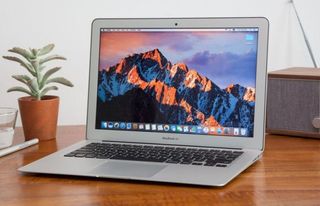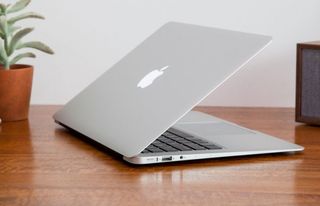After Ten Years, It’s Time to Kill the MacBook Air
You might have missed it over the long weekend, but yesterday (Jan. 15) marked the 10th anniversary of the introduction of the MacBook Air by Steve Jobs on stage at Macworld. When he removed its sleek chassis from a manilla envelope, it changed laptops forever; competitors raced to make their own machines that thin and light. However, with Apple barely updating this laptop for several years, it's time for the MacBook Air to take a one-way trip to the gadget closet in the sky.

When it was first announced, the MacBook Air made some controversial cuts, including the lack of a DVD drive, and, at launch, just one USB 2.0 port. For a display, it used a Micro-DVI connector and used adapters for full-size DVI and VGA displays. Today, with USB Type-C, offering just a couple of ports wouldn’t be surprising. But back then, at a pricey $1,799, it was a shocker. (No, the MacBook Air wasn’t always affordable.)
In February of 2008, when we published our review of the initial MacBook Air, we gave it three stars, praising its slim design and great display, but panning its single USB port and shorter-than-expected battery life.
That changed over the years, as it earned another USB port, switched to Mini DisplayPort, added an 11.6-inch size alongside the 13.3-inch default and, of course, got faster processors and much longer battery life. The Air became one of our favorite notebooks of all, and we gave it high ratings and numerous editors’ choice awards. But today, in 2018, the MacBook Air has lost its relevance. It didn’t have to be this way. Apple could have continued to upgrade the Air with top-notch features like a Retina display, Thunderbolt 3, Touch ID and even longer battery life. But Apple has instead focused on the 12-inch MacBook as its flagship thin notebook (one might call it the "Air apparent"), and the MacBook Air has languished.
Apple’s last update of the MacBook Air was a small processor bump to a fifth-generation Intel Broadwell CPU in 2017. (Most new notebooks have 8th or 7th Gen CPUs. The fifth-gen option was old even then.) The laptop still uses the same basic chassis design that it had in 2010. You won’t find any other PCs on the market with components and design that old, and the Air starts at $999 these days.

If Apple isn’t going to give the Air a full, true refresh, then it's time for it to go. Every refresh cycle that passes by without it getting a meaningful update is a stain on the laptop that, at one time, no one could beat. But now every vendor, from Asus to Dell to Apple itself, has laptops that are thinner, lighter and more powerful. That's not how the most influential laptop of all time should be treated or remembered.
If Apple were to update the Air with a Retina display and all of the new trappings, I know plenty of people who would buy it, with its mix of ports, the best keyboard on a MacBook (the ones on the Pro and 12-inch MacBook have been having some issues), and what’s still a slim and sleek design. But I don’t think that update will ever come. The MacBook Air is 10 years old, and Apple is letting it dangle by a thread. But it should let it go. Not every iconic product lives forever. (Where’s your click wheel iPod now?)
Stay in the know with Laptop Mag
Get our in-depth reviews, helpful tips, great deals, and the biggest news stories delivered to your inbox.
It’s OK to let the MacBook Air die and try new things, but don’t tarnish the legacy of one of the finest laptops ever by letting it collect dust with mediocre specs from 2015. It deserves better than that.
